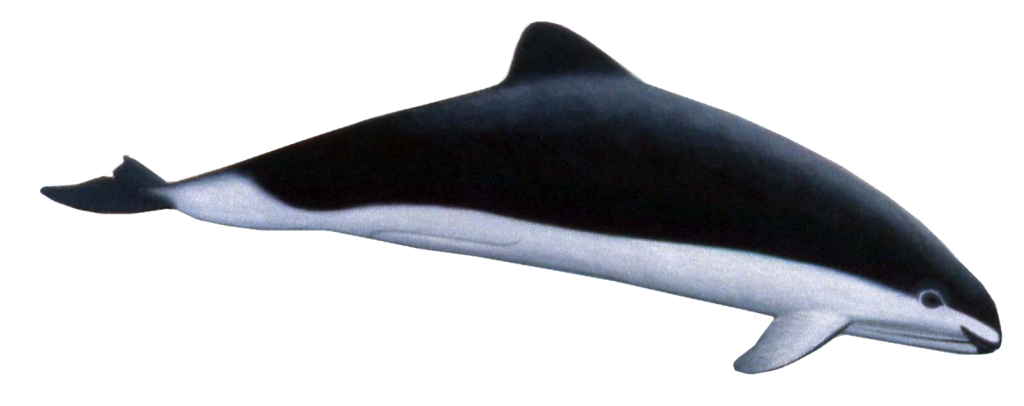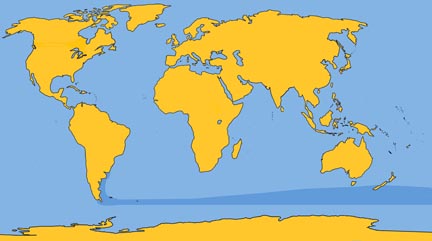
Family: Phocoenidae
Genus: Phocoena
Species: P. dioptrica Lahille, 1912
Of the four species of the genus Phocoena, two live in the southern hemisphere; the spectacled porpoise is one of them. It is known from fewer than a dozen specimens and is the largest of the four in the genus. Its color pattern is distinctive, especially the black circles around the eyes, which give the animal its common name.
Physical Description: The body is somewhat stocky. The head is small and rounded with no beak. The anus is located relatively near the flukes.
Color: The ventral white extends partially up the flanks to meet well-defined black covering the dorsal regions. The white also reaches above the eyes and terminates above the upper lip. The black lightens from the rear peduncle region to the tailstock, then darkens again, covering the dorsal side of the flukes. The eyes are encircled with black and the lips are rimmed with black.
Fins and Flukes: The flippers are small and rounded at their tips; the dorsal fin is longer along its leading margin, rounded at the top, with no falcation, and is located slightly to the rear of the mid-back region. The flukes are small, nearly pointed at the tips, with a definite median notch.
Length and Weight: Spectacled porpoises average 6.75 ft (2 m) for the male and 6 ft (1.8 m) for females, and an estimated 120 lb (55 kg).
Teeth: 21 small, spade-shaped teeth are found on each side of the upper jaw and 17 on each side of the lower jaw.
Feeding: Probably feeds on fish, squid, and crustaceans.
Breathing and Diving: Little of the animal is seen when they surface and they shy away from vessels that approach.
Mating and Breeding: One fetus, recorded in July 1912, measured 1.5 ft (46 cm).
Herding: These shy animals are solitary for the most part, but groups of three have been observed on numerous occasions.
Distribution: They are found off the coast of Argentina and Uruguay, the Falkland Islands, and South Georgia.
Migration: No information available.
Natural History Notes: This is the largest of the Phocoena. It is the only species in its genus to live near offshore islands as a permanent resident.







